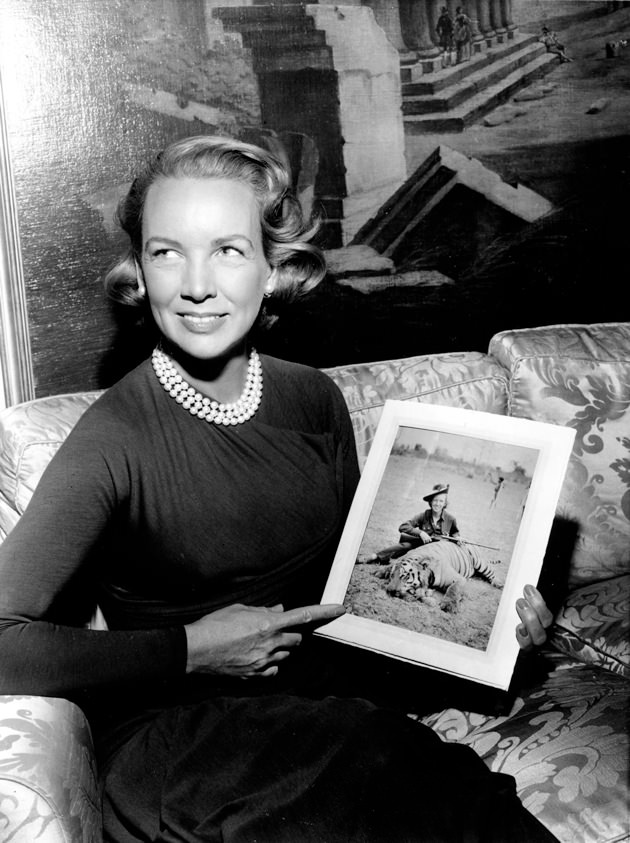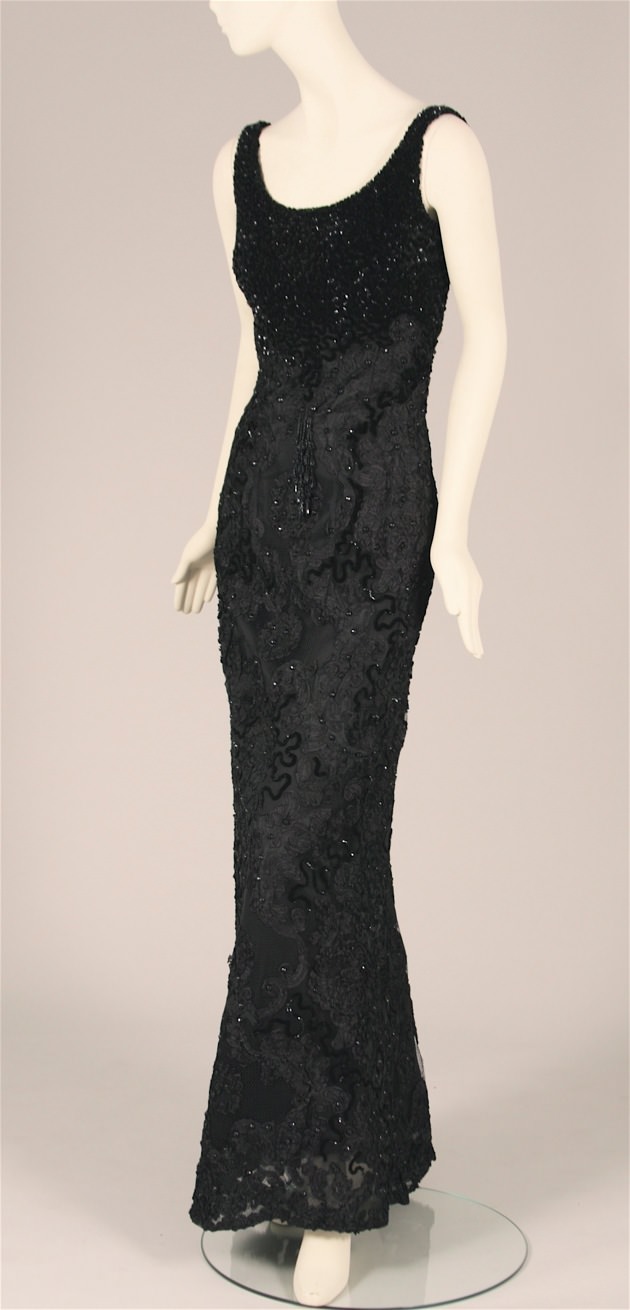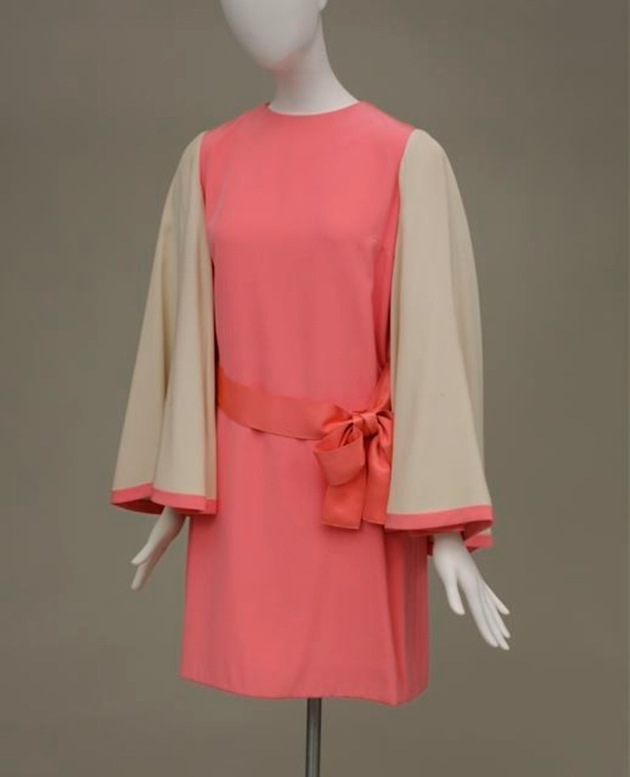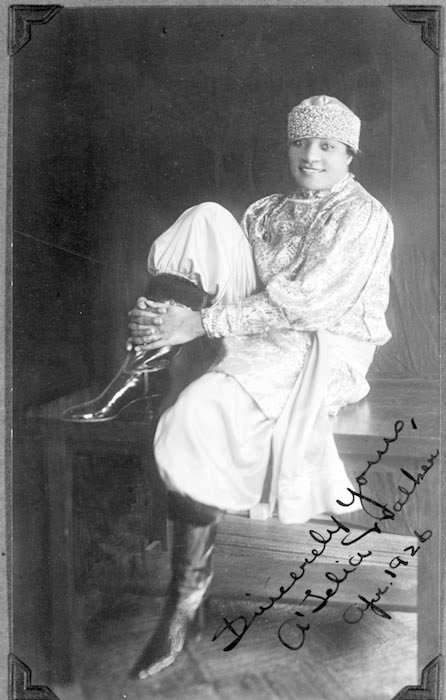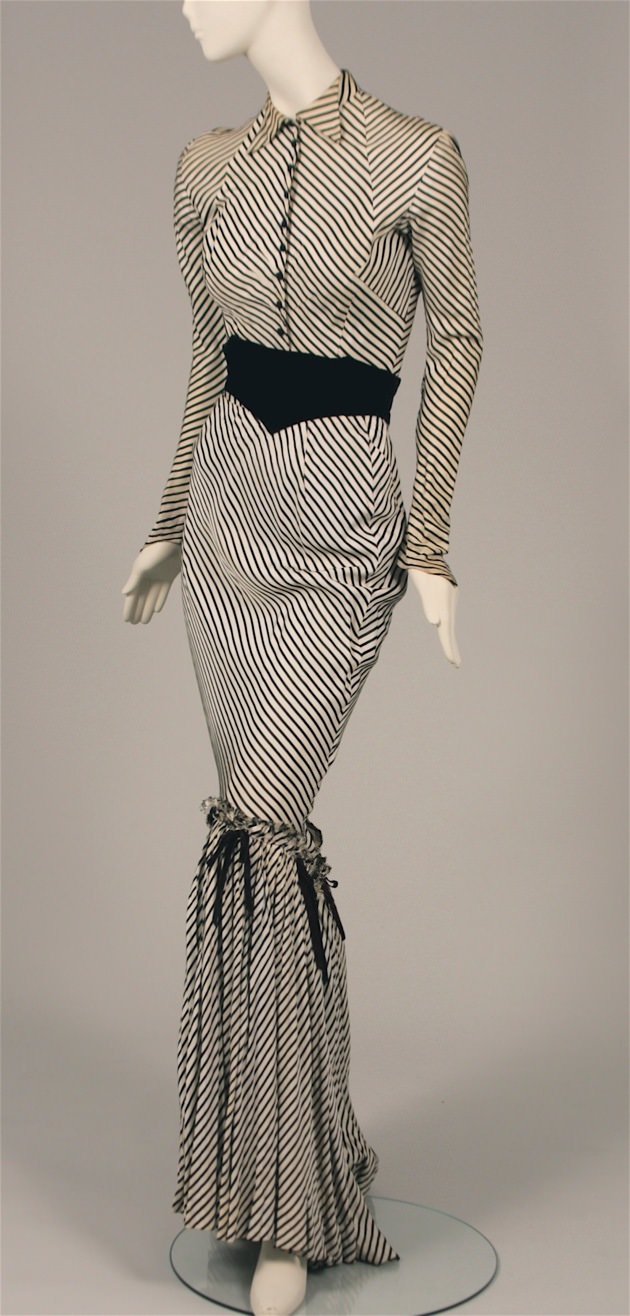The most notable change in female fashion during the past three decades has had nothing to do with such age-old preoccupations as hemline length, neckline depth, or silhouette width. Rather, it has been the inexorable transformation of the high-end women’s garment trade from the province of a tiny elite to an all-pervasive marketing tool for international luxury-goods conglomerates, which have masterminded such paradoxical concepts as mass luxury and global exclusivity, more through the sale of designer-label cosmetics and accessories than through clothing itself.
Today, red-carpet celebrities serve as living billboards to promote big-name dressmakers, shoemakers, and jewelers in borrowed finery at entertainment award ceremonies, only to have it all vanish after midnight like Cinderella back from the ball.Thus not least of the pleasures afforded by Notorious and Notable: 20th Century Women of Style—a comparatively small but thoroughly entertaining and subtly instructive exhibition on view at the Museum of the City of New York—is to be reminded that once upon a time, and not so long ago, the most influential style-setters actually owned their haute couture and bijoux.
One of this show’s distinctions is that the name of its principal business sponsor, the London-based jewelry firm Graff, is not splashed all over the place, as has been the case in several exhibitions at the Metropolitan Museum of Art’s Costume Institute (including those sponsored by Ralph Lauren and Yves Saint-Laurent), or worst of all, at the Guggenheim, whose disgraceful Giorgio Armani retrospective of 2000–2001 amounted to the corporate takeover of a major museum. In contrast to those lavish productions, this modest mounting occupies one large rectangular room, with dresses placed on fifty-three mannequins ranged against both long walls of the gallery, at the entry to which stand five vitrines containing jewelry and other objets de luxe.
Notorious and Notable is refreshingly unpretentious, perhaps because unlike the Metropolitan, the Museum of the City of New York sets out to address fashion as social history rather than as an art form. And no doubt because of differing conservation requirements, this show’s brighter illumination and lack of glass partitions make it much easier to see than costume installations at the Met, which can be as stygian as a Karajan Ring Cycle.
The title Notorious and Notable sets up a duality racier than the usual Great Ladies of Fashion approach, and few punches are pulled. Florence Gould, a French dancer who married an American tycoon and endowed an eponymous auditorium at New York’s Alliance Française, is identified as a “collabo[rationist] queen” in Nazi-occupied Paris; the writer Mercedes de Acosta is cited for her affairs with, inter alia, Garbo, Dietrich, and Isadora Duncan.
Facing each other across the gallery are dresses made for two New York socialites best remembered for their starring roles in headline-making murder cases. Ann Woodward, a dishy party girl who hooked a rich sportsman, is represented by a stunningly slinky black evening dress, among several pieces here that indicate its designer, Cristóbal Balenciaga, was supreme among twentieth-century couturiers. Woodward ordered it a decade after she shot her husband to death in 1955 under suspicious circumstances, an act she successfully claimed was accidental but which left her withdrawn from society (though not so much so as to forswear Balenciaga).
Vis-à-vis those winning widow’s weeds stands a girlish pink-and-white mini-dress that Marc Bohan of Dior made around 1968 for Martha “Sunny” von Bülow, the heiress who in 1980 mysteriously fell into a coma in which she languished until her death, nearly three decades later. Her husband, Claus von Bülow, a onetime J. Paul Getty aide, was tried, convicted, retried, and finally acquitted for attempted murder, a saga that won Jeremy Irons an Oscar in 1990 for his portrayal of Claus von Bülow in Reversal of Fortune. Sunny von Bülow’s jeune fille Dior confection accords as much with her childhood nickname as Woodward’s drop-dead Balenciaga appears the embodiment of her femme fatale notoriety.
The possessions of certain women can run counter to their perceived images. One vitrine contains a 1970s platinum bracelet so heavily encrusted with diamonds that it looks like something an old-time mob boss would have bought for his moll. Near it is a neatly tailored 1940s gold bracelet discreetly set with cabochon moonstones and small rubies, suitable for a Park Avenue hostess. Unexpectedly, the more restrained example was owned by the wife of the gangster Meyer Lansky; the flashy bangle belonged to the wife of William F. Buckley, Jr.
Advertisement
Among the most memorable outfits are a sinuously draped burnt-sienna velvet dinner dress made in the 1930s by the Russian-born, New York-based couturière Valentina for the brilliant monologist Ruth Draper; a 1920s fur-collared paisley wool coat, delicately sprinkled with jet beads, owned by A’Lelia Walker, whose hair products made her the first black female millionaire; and an ethereal ice-blue evening ensemble that Balenciaga created in 1968 for the much-married beauty Mona Williams (among her sequential surnames), comprising a daringly simple A-line gazar dress and matching cape lined with fluttering pink silk petals. It is said that when he shut down his Paris atelier later that year she took to her bed for a week.
Everything we see here was intended to seduce in one way or another: through status, aesthetics, wealth, novelty, or sex appeal. In the latter division, nothing tops the extraordinary costume worn onstage in the 1940s by the inimitable stripper Gypsy Rose Lee. Made from black-and-white striped crepe, this trimly fitted but primly covered-up outfit—long-sleeved, high-necked, and floor-length—exudes the neo-Victorian propriety of the uniformed housemaids that Mary Petty drew for The New Yorker. The trick is that this working girl’s get-up was ingeniously constructed with back snaps to allow the artiste to take it all off, piece by tantalizing piece.
Lee, whose intellectual aspirations were memorialized in one of Lorenz Hart’s cleverest lyrics (“Zip! My intelligence is guiding my hand / Zip! Who the hell is Sally Rand?”) understood that parallel to the art of dressing is the art of undressing. As this magnificently erotic artifact tells us, she proved that the deep allure of women’s clothing resides as much in the mind as it does on the body.
Notorious and Notable: 20th Century Women of Style is on view at the Museum of the City of New York through January 2, 2011.


